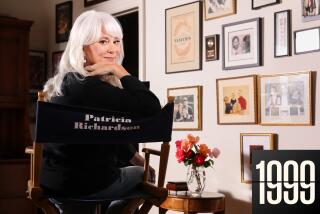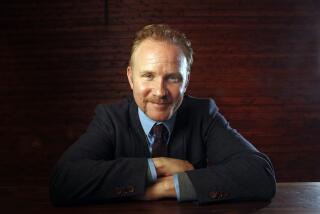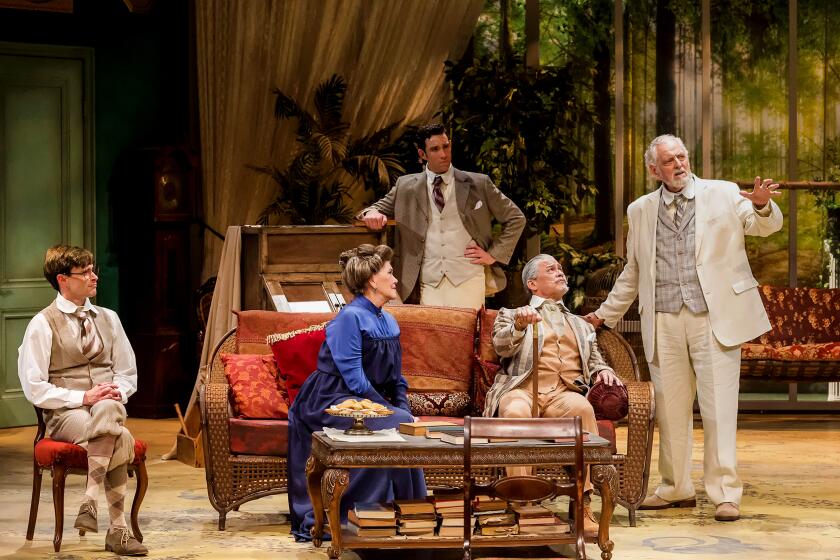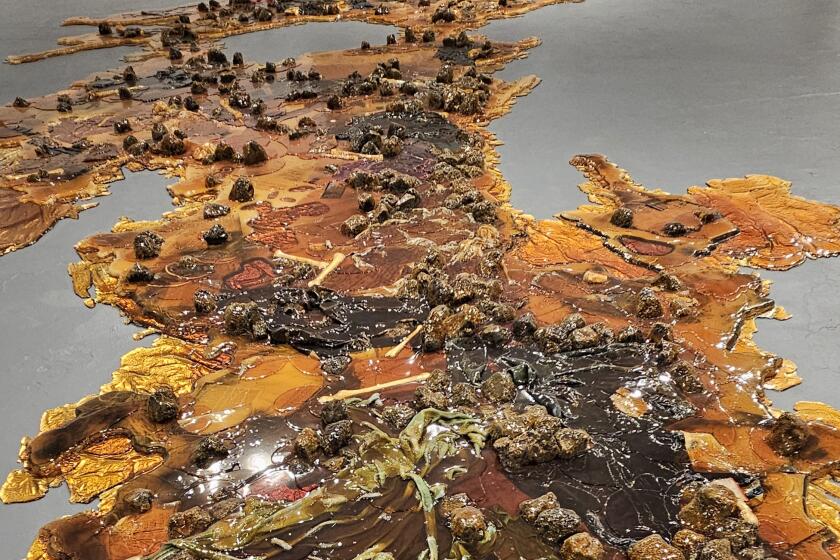Spanish Stepping : Fountain Theatre Overflows Weekly With Flamenco Aficionados
L ate in the afternoon on bullfight days, the sun slants menacingly against the irregular geometry of Andalusian villages. The air is charged with excitement, and in the distance, a flamenco guitar can be heard, softly at first . Soon, the music is louder and raspier and cruel . . . .
Can’t make it to southern Spain for flamenco? On weekends, there’s “Flamenco at the Fountain”--that’s the Fountain Theatre, a small Equity theater in Hollywood.
But nothing small is happening once inside, if you are lucky enough to have reservations. Recently, several people stood outside with a sign, “We need tickets.” Thirty people had to be turned away that day.
Audiences sometimes are squashed together like sardines, but it’s worth it.
During this flamenco--which is up close--you can actually see the sweat on the performers on the stage, a dirty wooden floor. The performers are three musicians, three dancers and two singers. The lyrics are in Spanish.
Lourdes Rodriguez, a featured dancer, uses her castanets with ease and self-assurance. She ignores the sweat dripping from her brow and concentrates on the tune. She also ignores the fact that she has lost an earring during a tribunal dance of the scarves.
“When I’m dancing, I completely get lost in my own little world,” says Roberto Amaral, artistic director and lead dancer of Fuego Flamenco, hired by the theater for what was to be a three-week engagement. It has turned into nearly two years.
“I almost go into a trance when I hear the singer and the guitarist. I hear the rhythms that I relate with my feet and my hands, like a pulse that is hypnotic. I become lost in a world of sound,” says Amaral, who formed his troupe seven years ago.
True flamenco is not just the dance form, but the singing, the guitar playing and the rhythm accentuation. But the dancer is the show-stopper.
“I live, I breathe, I feel flamenco as I’m dancing. I’m in it 100%,” Amaral says.
Amaral is a student of famed flamenco dancer Jose Greco.
“He’s a legend,” says the 40-ish dancer. “Greco was never considered one of the best Spanish dancers. He had a lot of stage presence and charisma and was more of a showman. He was what people used to tab as Hollywood flamenco, during the ‘50s and ‘60s when flamenco was commercialized in films and big stage productions.
“He never outlived that and was never considered a purist. . . . Yet he did a lot for Spanish dance and put it on the map to the American public.”
Amaral learned flamenco from Greco’s wife, Nana Lorca, who was also his leading female dance partner and did a lot of the choreography. “She took me under her wing and taught me a lot. I pass her teachings along to my students.”
During the performance, you forget you’re in a thriving city and feel as if you are on a secluded Spanish mountain, far from civilization, where you hear singing about the unrequited love of a dying mother surrounded by her horrified children.
The spirit of flamenco is continued during intermissions with tapas (Spanish hors d’oeuvre), including homemade casseroles, brownies and sangria. They are prepared and served by Deborah Lawlor, theater owner and mistress of ceremonies as well as dancer and world traveler, who bought this theater to fulfill a lifelong dream.
“If you watch or participate in a juerga (flamenco session), there is an overwhelming sense of peace. For a moment, there are no differences in the world, prejudices dissolved,” says Lawlor. “We are all Gypsies emersed in the song and the tradition of ancient Spanish customs.”
There are waves of flamenco groupies in the room. Audience members can’t refrain from clapping to the rhythm of the music. They are part of the show.
“When I see good flamenco, I feel 17,” says Katrina Vrinos, 71. “I live in North Hollywood and would go anywhere for a good show. It keeps me alive.”
Two Spanish teachers drove in from Agoura to scout out entertainment for their students.
“I’ve been to Spain, and this is the real thing,” says Donna DiLoretto. “This is pure (improvisation). The dancers dance like they’re possessed. They have to. If the duende (spirit) isn’t there, it’s not true flamenco.”
Fountain Theatre, 5060 Fountain Ave. (half-block east of Normandie). For information: (213) 663-1525. Amaral teaches classes for $10. He also has package rates.
Get In Step With Flamenco * Flamenco got to Spain via Morocco, Israel, Pakistan, Egypt and the Far East.
* Theories vary on where the name flamenco comes from. One says it’s the name given to the religious chants of Spanish Jews who migrated to Flanders during the Inquisition. Another says the word is a mispronunciation of the Arabic words felag and mengu ( felagmengu ) or fugitive peasant.
* Development of the dance form is owed to Gypsies.
* Flamenco also developed as a mode of expression in prisons and on chain gangs as a way to keep the spirit unbroken.
* Traditionally, there was a sharply defined difference between the dances of the bailaor and bailaora. The male dancer emphasized the footwork, a symbol of strength and virility, and the female dancer emphasized the upper torso, a symbol of femininity and passion.
* Costume is very important. Women wear full, colorful dresses with multicolored fringes and ruffles, large combs, mantillas and hand-embroidered shawls. Men wear lots of tight black clothing, a hat and perhaps a shirt with ruffles and a vest.
More to Read
The biggest entertainment stories
Get our big stories about Hollywood, film, television, music, arts, culture and more right in your inbox as soon as they publish.
You may occasionally receive promotional content from the Los Angeles Times.






